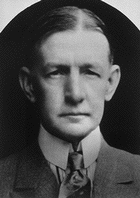July 4th, 1926 Celebration
- Home
- About Salem »
- Salem Tales »
- July 4th, 1926 Celebration
1926 Fourth of July Celebration
The Fourth of July festivities of 1926 were not just a routine acknowledgement of American independence. They also marked the opening day of a full week of activities commemorating the 300th anniversary of Salem’s founding by Roger Conant and his Old Planters.
The 1926 celebration kicked off on Sunday, July 4, with the ringing of all the church bells and chimes in the city, followed by special services honoring Salem’s history at each house of worship. At noon the first of four concerts for the day took place at Salem Common. Two others were held that evening immediately following the dedication of the new common bandstand by Mayor George Bates.
One of those evening performances featured 500 singers with the Salem Oratorio Society. The other was given by the Salem Cadet Band, led by long-time director Jean Missud, in whose honor the bandstand would be rededicated 50 years later.
Many of the revelers — 100,000 of them in fact — then trooped up to Gallows Hill for a day-ending program of music by the Salem Light Infantry Band and a huge bonfire.
The main event on Monday, July 5, was the Antiques, Horrible, and Grotesque Parade. Participants ranged from the 100-member contingent from the Juniper Community Club at Salem Willows to a single individual dressed as a South Seas Island cannibal. The Juniper Point group won the first prize of $100 for its clever circus theme, “Under the Big Top.”.
After dark local residents were treated to a spectacular illumination of the two cruisers, the Cincinnati and the Raleigh, and other naval vessels anchored in Salem Harbor.
The following day more than 1,000 sailors from those vessels joined representatives from nearly 75 other organizations and businesses in a massive Military, Society, Trade and Civic Parade through downtown Salem.

Charles Dawes, vice president of the United States, was on hand for Salem’s 300th anniversary. After watching the grand parade, which featured 10,000 marchers and 50 floats he called it “one of the finest demonstrations of civic loyalty he had ever witnessed”
Approximately 10,000 people marched in the parade, which featured more than 50 floats and attracted an estimated 100,000 viewers.
Among those watching the parade was Charles Dawes, vice president of the United States. Dawes and Massachusetts Gov. Alvan Fuller were on hand for the official Salem tercentenary banquet, which was held that evening at the Salem Armory.
The Salem Evening News reported that the vice president “spoke in glowing terms of the parade” and told the 1,200 attendees at the banquet that “it was one the finest demonstrations of civic loyalty he had ever witnessed.”
The city’s remarkable history and architecture were given their due throughout the week. From Tuesday through Thursday some of the city’s architectural treasures were opened for public visitation. Thousands took advantage of this rare opportunity to tour the Loring-Emmerton house at 328 Essex St., the former residence of noted Salem architect-woodcarver Samuel McIntire at, 31 Summer St., and more than a dozen other homes in what are now the Mclntire and Salem Common Historic Districts.
On Thursday, 10 Chestnut Street mansions were opened to the public as part of a day-long street fair. Residents in period costumes welcomed visitors to the mansions and strolled up and down the street. Some portrayed famous Salemites, including the Rev. William Bentley; Mrs. Spencer, the woman who sold the famous Gibraltar candies; and the Transcendentalist poet Jones Very.
Luncheon was offered at the back Yard of Henry Benson’s Hamilton Street home, and tea was served at Hamilton Hall and other locations. Performances, arts and crafts demonstrations and sales, concerts by the Salem Cadet Band, and stage coach rides added excitement and flavor to the event.
That same day a program was held at the Ames Hall in the Y.M.C.A. on Essex Street. Participating were Dr. Frank Gardner of the Salem Planters Society, historian Sidney Perley, and representatives from area historical societies.
While the celebration ended with a full day of activities on Saturday, the climax was Friday’s Floral and Historical Parade. For the second time in just four days some 100,000 area residents and tourists turned out to watch a parade wind its way down Lafayette Street and through downtown Salem.
Forty-three floral floats, many designed by students at Salem schools, led the parade behind Grand Marshal Harry Perkins. Behind them came 63 more floats, each depicting a tableau from Salem’s long and illustrious history.
Included in the historical section were “An Indian Village” presented by the Agawam Tribe No. 5 of the International Order of Red Men, the Salem Woman’s Club’s “Tea in the Ropes Garden,” and “Mothers of Salem’s Famous Men” sponsored by the Mothers Club at the House of the Seven Gables.
Collectively, the historical floats took spectators on what the Salem Evening News called a “journey along misty, dim and almost forgotten trails of Salem history.”
The week’s many activities finally came to an end on Saturday night when 75,000 people gathered on Gallows Hill for a “grand display of fireworks.”
A few days later a reflective editorial in the Salem Evening News looked at the celebration and what it told about the citizenry.
“A community that has the energy to get up such a display is no Sleepy Hollow, no dreamer of past dreams, but a wide-awake modern town with energy to devote to civic causes …. When a fine old town has that spirit, you can say not merely that it has a great past, but that it has a free and useful future ahead of it.”
Jim McAllister
All rights reserved

